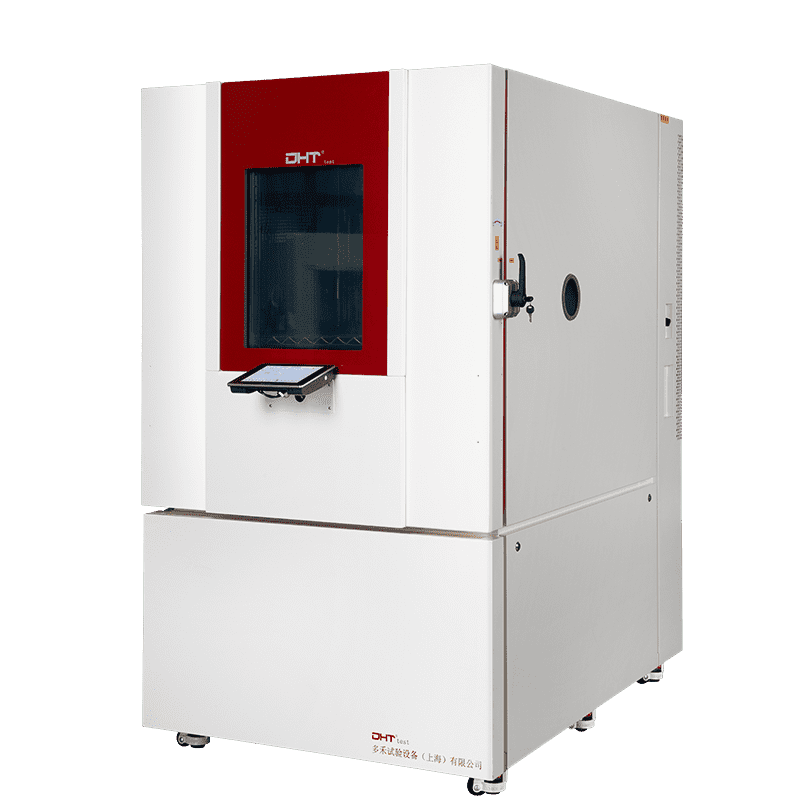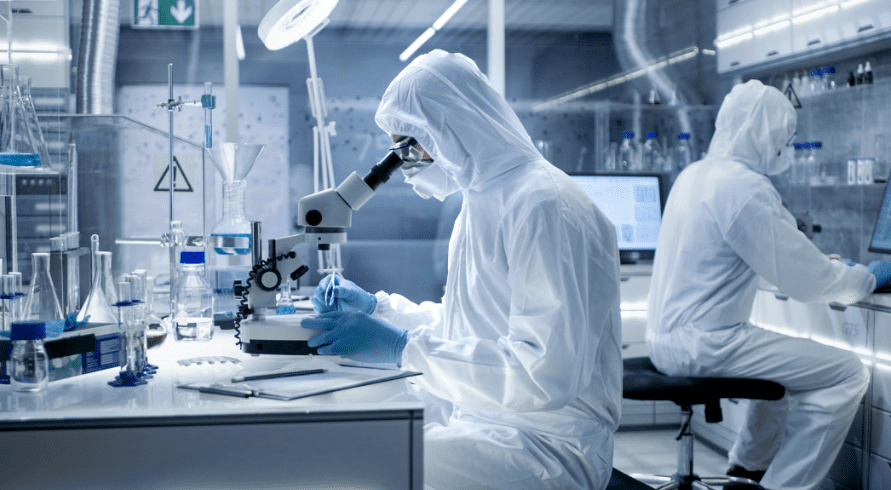Geschrieben von Shirley
Da die Bereiche Elektrofahrzeuge, Energiespeicherung und Unterhaltungselektronik weiterhin boomen, sind die Sicherheit, Zuverlässigkeit und Langlebigkeit von Lithium-Batterien zu zentralen Anliegen geworden. Laboratorien – an vorderster Front der Batterie-Forschung und Qualitätskontrolle – sehen zunehmend verfeinerte Anforderungen an die Umweltzuverlässigkeitstests von Batterien. Die Herausforderung liegt darin, eine Testkammer auszuwählen, die nicht nur internationalen Standards entspricht, sondern auch die zukünftige technologische Entwicklung unterstützt. Dieser Artikel bietet einen wissenschaftlichen Auswahlrahmen basierend auf drei Kerndimensionen: technischen Spezifikationen, regulatorischer Konformität und Anwendungsszenarien. Anhand der Praktiken führender globaler Unternehmen erklärt er auch, warum der DHT®
Umwelttestkammer für Batterien zur Lösung der Wahl für Fortune-Global-500-Laboratorien geworden ist.
I. Technische Spezifikationen: Von grundlegenden Fähigkeiten bis zu extremen Bedingungen
1.1 Strategische Auswahl von Temperatur- und Luftfeuchtigkeitsbereichen
Die raue Natur der Batterietests spiegelt sich am besten in der Forderung nach extremer Umweltsimulation wider. Normen wie UN38.3 und IEC 62133 verlangen, dass die Kammern in einem Temperaturbereich von -70°C bis +150°C arbeiten und die Luftfeuchtigkeit zwischen 10% und 98%RH geregelt wird. Verschiedene Anwendungsszenarien haben unterschiedliche Prioritäten:
-
Der Schwerpunkt der Tests von EV-Stromversorgungsbatterien liegt auf Kaltstarts bei -40°C und Hochtemperaturlagerung bei +85°C.
-
Bei der Prüfung von Energiespeicherbatterien liegt der Schwerpunkt auf den Degradationsraten unter zyklischer Belastung bei 55°C.
-
Die Prüfung von Verbraucherbatterien erfordert eine Validierung der Luftdichtheit bei 40°C/95%RH.
Die Prüfschränke der DHT® TES-Serie arbeiten mit einer dreistufigen Kaskadenkühlung, die selbst bei -70°C eine präzise Temperaturregelung mit Schwankungen innerhalb von ±0,5°C ermöglicht. Das Feuchteregelungssystem mit einem Zweikanal-Taupunkt-Kalibrierungsmodul sorgt für eine Genauigkeit von ±2%RH unter schwierigen Bedingungen wie 85°C/85%RH - weit über den Industriestandards.
1.2 Das Verborgene Wert der dynamischen Temperaturrampe
While traditional chambers emphasize static metrics, real-world conditions involve rapid thermal changes. For instance, an EV battery may rise from -30°C to 50°C within 15 minutes when a vehicle is started in winter. DHT®’s patented linear temperature ramping technology achieves rates of 30°C/min (up to 40°C/min in optional models), with temperature uniformity within ±1.5°C, simulating real environmental stress with high precision.
II. Industrielle Standards: Umfassende Konformität durch Design
2.1 Sicherheit Philosophie der Technik
Bei Batterietests geht es grundsätzlich um Risikominderung. Die 2023 aktualisierte Version von UL 9540A schreibt vor, dass die Prüfkammern Folgendes enthalten müssen:
-
Fünfstufiger Explosionsschutz, einschließlich Druckentlastungskanälen, flammhemmenden Auskleidungen und Feuerunterdrückungssystemen auf Stickstoffbasis.
-
Mehrdimensionale Überwachungssysteme für Spannungs-, Temperatur- und Verformungsanomalien.
-
Aerosolfilteranlagen für toxische Gase (z. B. HF, CO), die beim thermischen Durchgehen entstehen.
Die DHT®-Kammern sind vom TÜV Deutschland nach ATEX Kategorie 2 zertifiziert. Das firmeneigene VOC-Reinigungssystem fängt 99,97% der 0,3μm-Partikel ab und reduzierte in Feldversuchen mit Samsung SDI die Zeit für die Eindämmung thermischer Zwischenfälle von einem Branchendurchschnitt von 45 Minuten auf nur 8 Minuten.
2.2 Rückverfolgbarkeit der Daten durch die Aufsichtsbehörden
Die EU-Batterieverordnung (2023/1542) schreibt eine 10-jährige Rückverfolgbarkeit von Testdaten vor. DHT®'s DHT-Link Pro Software verfügt über integrierte Blockchain-Zeitstempel. Alle Testkurven und Protokolle sind AES-256 verschlüsselt und unterstützen 21 CFR Part 11-konforme digitale Signaturen für eine nahtlose Revisionssicherheit.
III. Szenariobasierte Auswahl: Vom Labortyp zur technischen Roadmap
3.1 Wachsender Bedarf an F&E Laboratorien
Labors, die sich mit Spitzentechnologien befassen - wie Festkörper- oder Natrium-Ionen-Batterien - benötigen Testsysteme mit fortschrittlichen Integrationsmöglichkeiten:
-
Optische Beobachtungsfenster für die In-situ-Quellungsanalyse
-
Widerstandsmessmodule mit vier Fühlern
-
Vakuum-Simulationskammern für Elektrolytprozesse auf Sulfidbasis
Die modulare Architektur von DHT® ermöglicht eine flexible Erweiterung der Funktionen. Zu den Standardmodellen gehören 12 reservierte E/A-Schnittstellen, und Labore wie das Forschungs- und Entwicklungszentrum von CATL haben die Plattform genutzt, um ein synchronisiertes CT-Scannen von Elektrolyt-Einweichprozessen zu erreichen.
3.2 Produktionslaboratorien: Abwägung Präzision und Energiekosten
Bei der End-of-Line-Prüfung in der Batterieherstellung müssen die Labore ein Gleichgewicht zwischen Leistung und Betriebskosten finden. Das Eco-Pulse™ Energiesparsystem von DHT® bietet Effizienz durch:
-
Adaptive Laststeuerung mit drehzahlvariablen Kompressoren
-
Wärmerückgewinnungsmodule, die Abwärme in Entfeuchtungsenergie umwandeln
-
AI-optimierte Testprofile, die die Stromkosten um bis zu 23% senken
IV. Warum führende globale Labore DHT® wählen
In vergleichenden Bewertungen mit Marken wie ESPEC und Binder heben sich die DHT®-Kammern mit deutlichen Vorteilen ab, die bei technischen Entscheidungsträgern Anklang finden:
-
Unter Gesamtbetriebskosten
-
MTBF der Kernkomponenten übersteigt 50.000 Stunden
-
Wartungskosten 40% unter dem Branchendurchschnitt
-
Szenariobasierte Testprotokollbibliothek
-
Vorinstalliert mit mehr als 200 Standard-Prüfprofilen (GB/T 31485, SAE J2464, usw.)
-
Testauslösung mit einem Klick
-
Globalisiertes technisches Unterstützungsnetzwerk
-
Servicezentren in China, Deutschland und den USA.
-
4-Stunden-SLA für Notfälle
Ein weltweit führendes EV-Batterieunternehmen meldete nach dem Einsatz von DHT®-Kammern eine Reduzierung der Testzykluszeit um 15% und eine Senkung der Wiederholungsprüfungsraten von 6,7% auf 4,9%.
V. Fahrplan für die Entscheidung: Vier kritische Bewertungsschritte
-
Mapping der Anforderungen
-
Definition der anwendbaren Normen (z. B. UN R100 für Vibrationstests)
-
Klärung der erforderlichen Probengröße (z. B. ≥2000L Volumen für 280Ah Energiezellen)
-
Technisch Validierung
-
Kalibrierungsberichte von Dritten anfordern
-
Schwerpunkt auf Temperaturgleichmäßigkeit und Feuchtigkeitsabweichung als Messgrößen
-
Risiko-Audit
-
Überprüfung der Explosionssicherheitszertifikate, der Einhaltung der Cybersicherheitsvorschriften (IEC 62443) und des Verlaufs von Vorfällen
-
Wertbestimmung
-
Verwenden Sie ein TCO-Modell (Total Cost of Ownership), um die 5-Jahres-Ausgaben für Kauf, Energie und Wartung zu vergleichen.
Bevor Sie einen Kauf abschließen, empfehlen wir Ihnen, eine individuelle Vor-Ort-Testvorführung anzufordern. DHT®-Ingenieure können mobile Kammern für 72-stündige Live-Simulationen einsetzen, um die Leistung unter realen Bedingungen zu überprüfen.
Schlussfolgerung: Investieren Sie über die Spezifikationen hinaus - Planen Sie für die Batteriezukunft
In einer Ära rasanter Batterieinnovationen müssen Labore über einfache Spezifikationsvergleiche hinausgehen. Eine solide Auswahlstrategie sollte die technische Tiefe, die Anpassung an die Vorschriften und die langfristige Nachhaltigkeit berücksichtigen. Die
DHT®. Die Battery Environmental Reliability Test Chamber definiert den Industriestandard neu - sie erfüllt nicht nur die heutigen Anforderungen, sondern dient als strategische Investition für die Batterierevolution von morgen.
Leute fragen auch
Welche technischen Hauptmerkmale sollten bei der Auswahl einer Batterie-Umwelttestkammer Priorität haben?
Bei der Auswahl einer Prüfkabine sollten breite und präzise Temperatur-/Feuchtigkeitskontrollbereiche, schnelle dynamische Temperaturänderungen und modulare Erweiterbarkeit priorisiert werden. Beispielsweise bieten DHT®-Kabinen einen Bereich von -70 °C bis +150 °C, ±0,5 °C Temperaturfluktuation und bis zu 40 °C/min Änderungsrate—ideal zur Nachbildung realer Batteriestressbedingungen wie kalte Starts von Elektrofahrzeugen oder schnelle thermische Zyklen.
Wie kann ich sicherstellen, dass die Testkammer den aktuellen Sicherheits- und Konformitätsstandards entspricht?
Achten Sie auf Kammern mit Zertifizierungen wie ATEX Kategorie 2, UL 9540A-Konformität und mehrschichtiger Explosionsschutz. DHT®-Kammern beinhalten VOC-Filtration, Stickstoff-Brandunterdrückung und giftige Gasbehälter. Darüber hinaus helfen Features wie blockchain-basierte Daten-Nachverfolgbarkeit und AES-256 verschlüsselte Protokolle Labors dabei, die EU-Batterieverordnung 2023/1542 und 21 CFR Teil 11 einzuhalten.
Was macht eine Testkammer sowohl für F&E- als auch für Produktionslabore geeignet?
Vielseitigkeit und Energieeffizienz sind entscheidend. F&E-Labore profitieren von I/O-Erweiterbarkeit und Optionen wie In-situ-Beobachtung oder Vakuum-Simulation. Produktionslabore schätzen Kostenkontrolle – das Eco-Pulse™-System von DHT® reduziert den Energieverbrauch um bis zu 23 %, ohne die Genauigkeit zu beeinträchtigen. Eine Kammer, die beides ausbalanciert, kann Labore von der frühen Entwicklung bis zur skalierten Fertigung bedienen.


